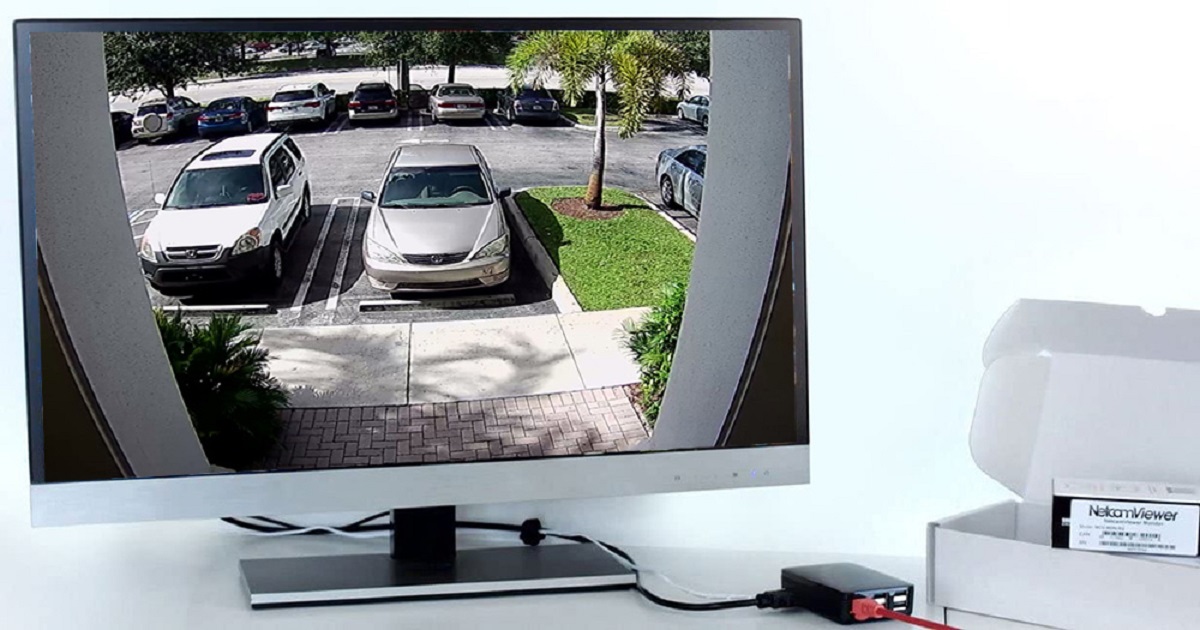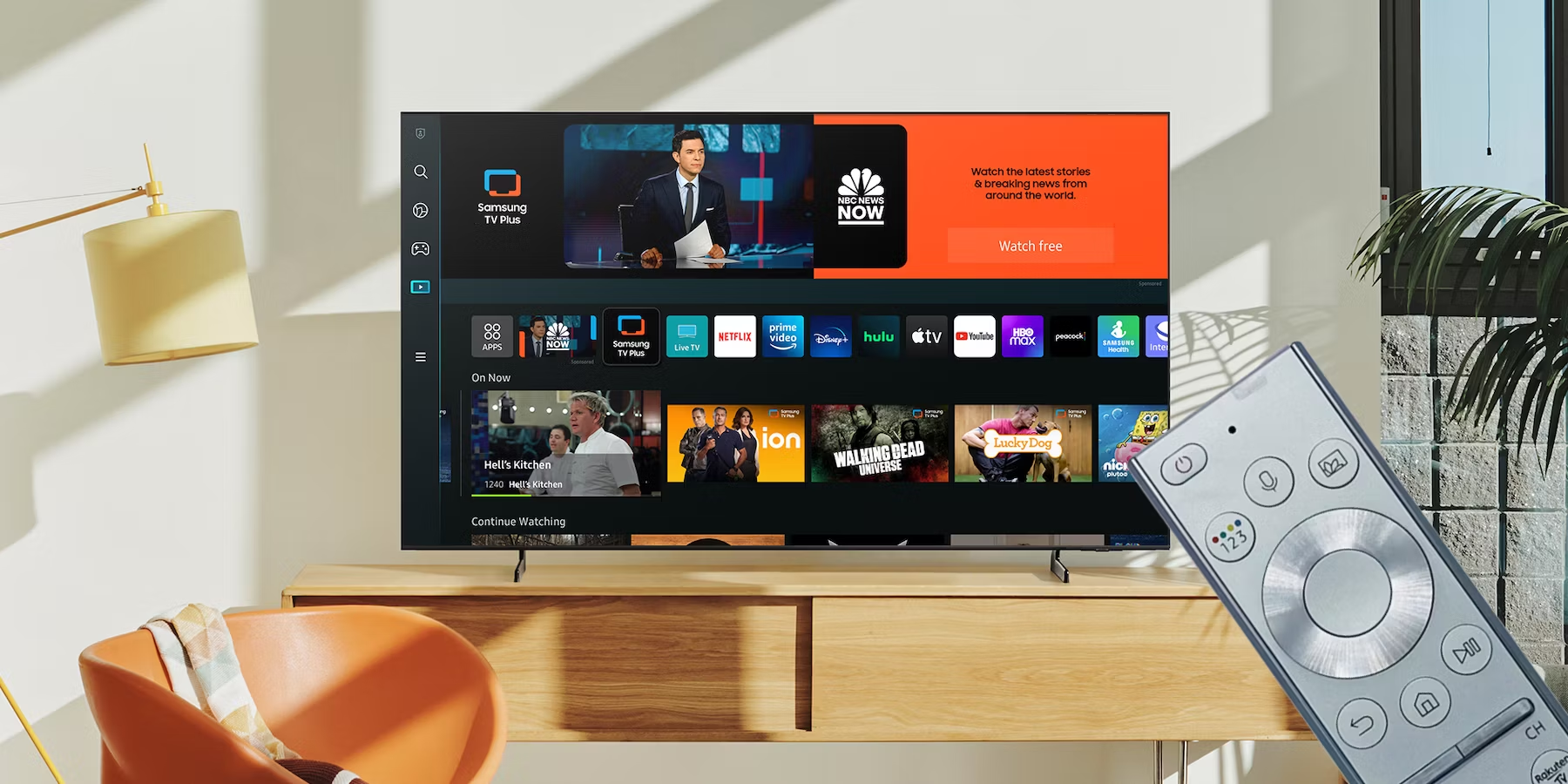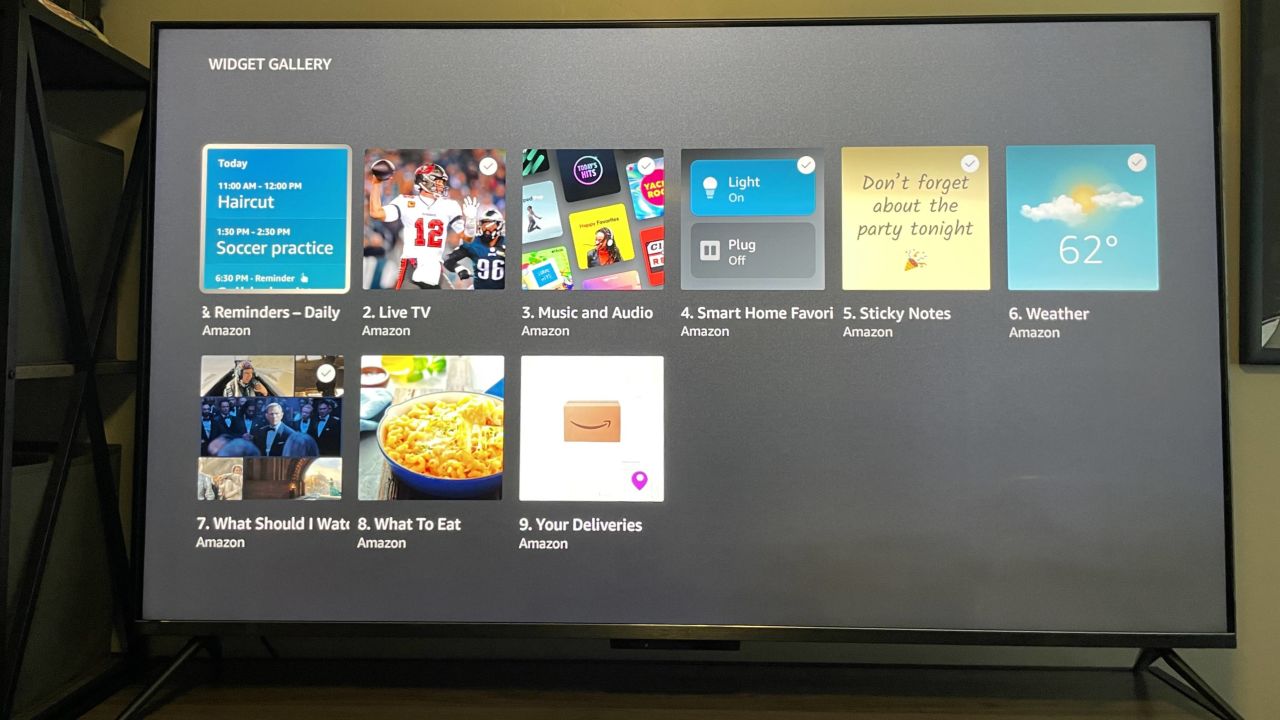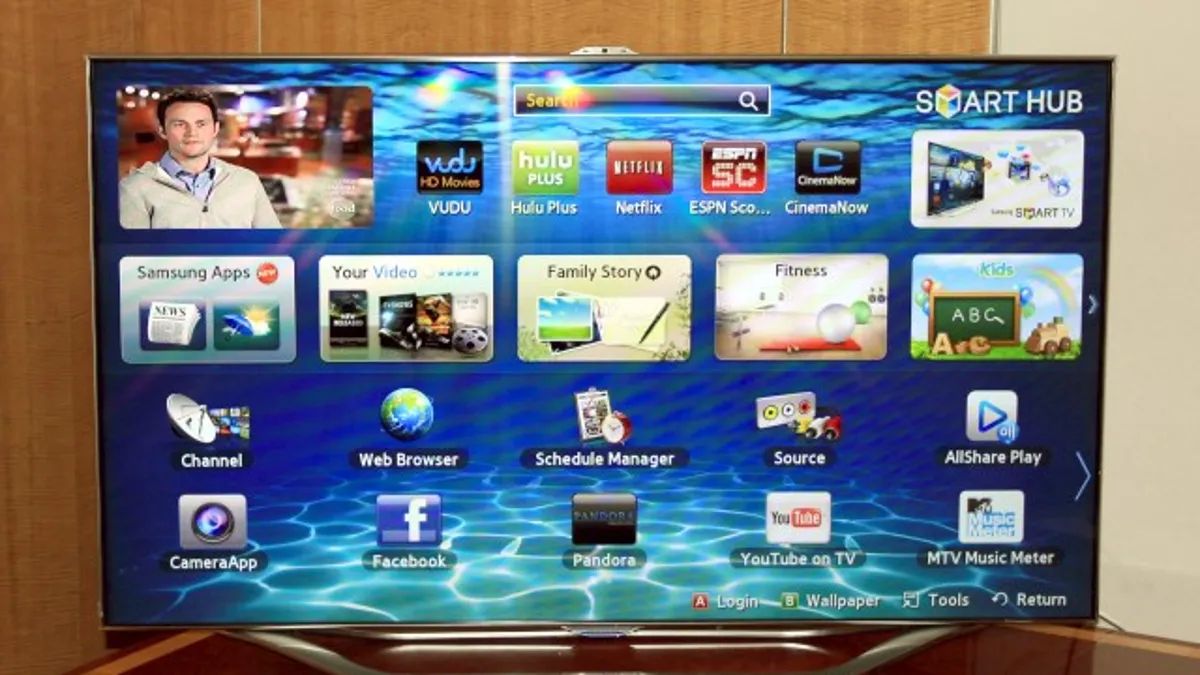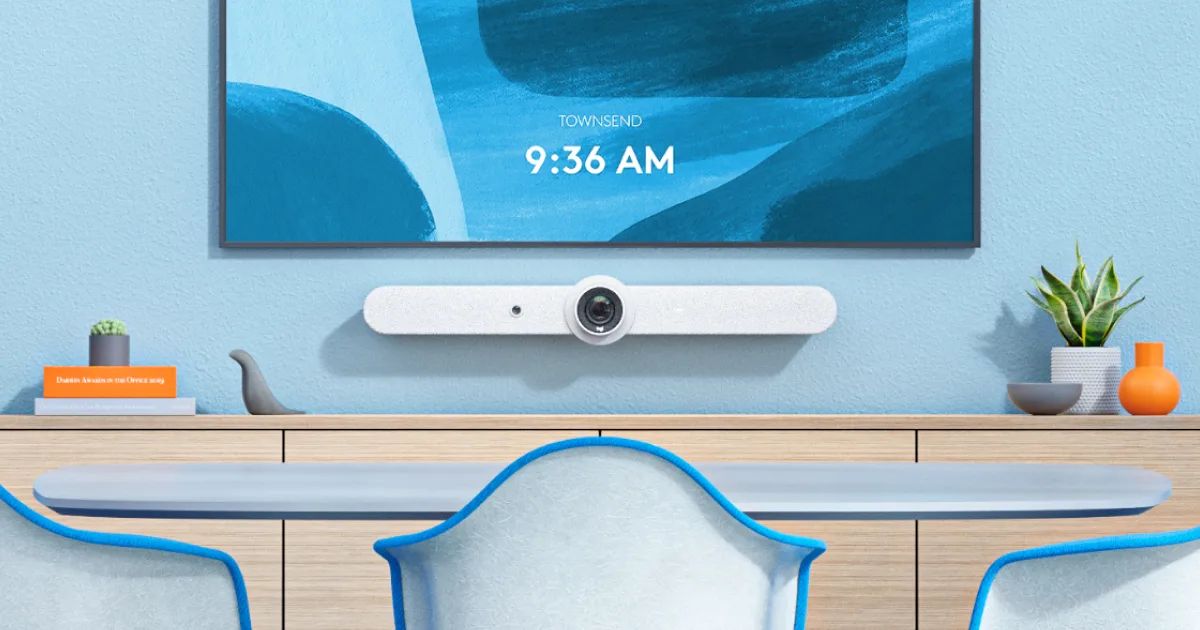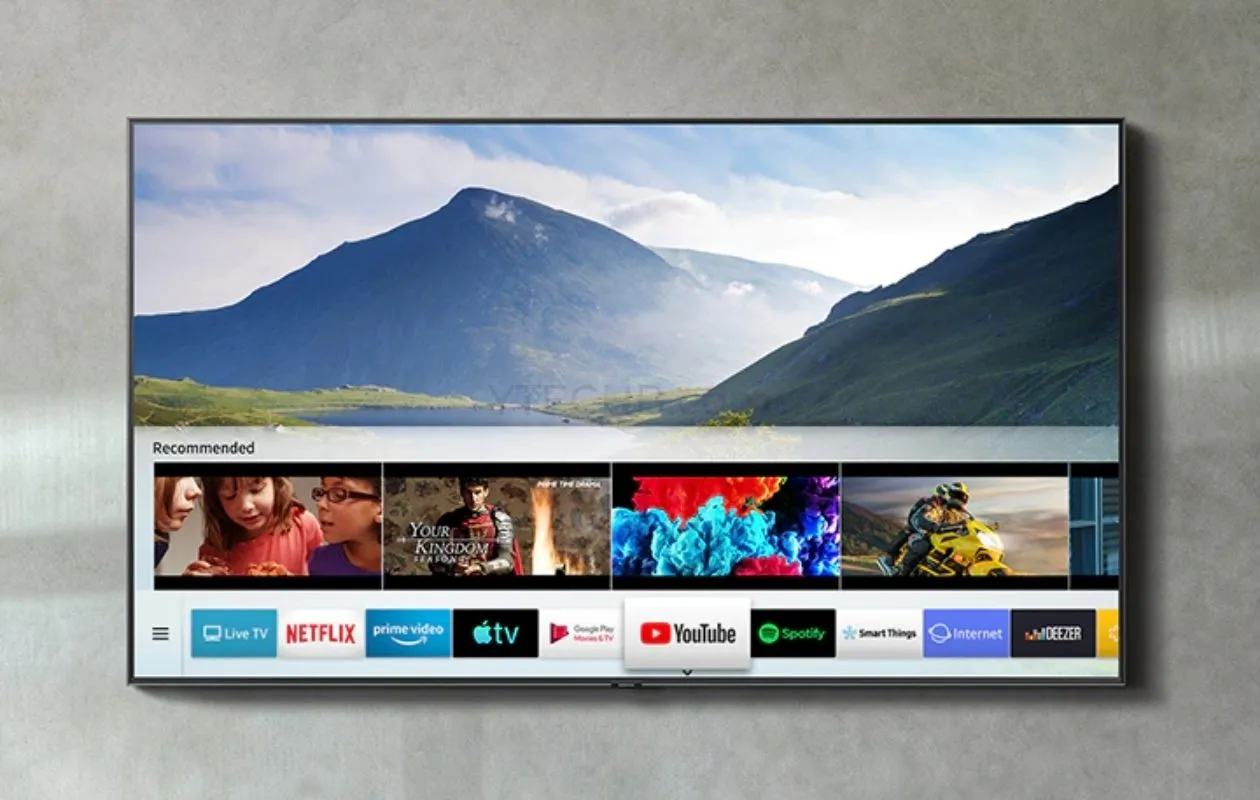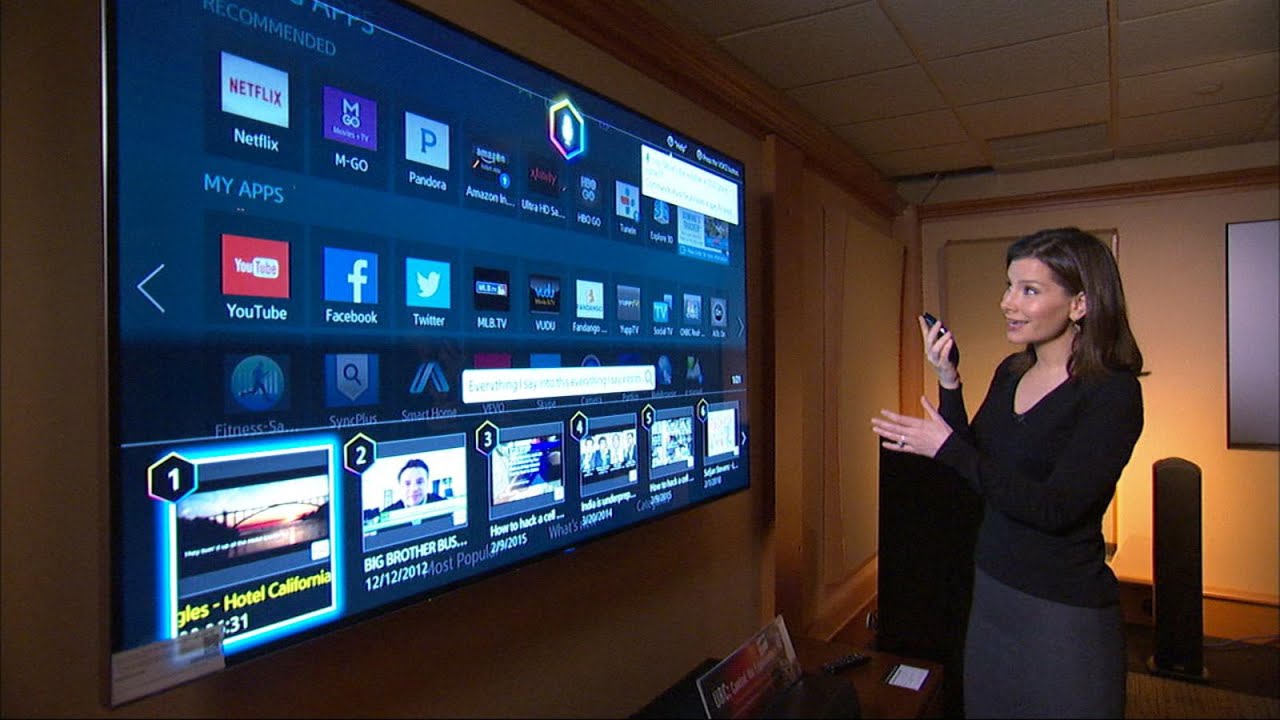Introduction
Welcome to the world of smart TVs! With their advanced features and connectivity options, smart TVs have revolutionized the way we consume entertainment and interact with our favorite content. These intelligent televisions offer a range of exciting features, including built-in cameras, which allow for innovative applications such as video calling, gesture control, and even facial recognition.
When it comes to utilizing these camera-based features, it is important to know the exact location of the camera on your smart TV. This knowledge not only helps in using these features effectively but also allows you to safeguard your privacy and ensure the security of your personal information. In this article, we will explore the different types of smart TVs, the traditional and alternative placements of cameras on these devices, as well as the features and functions of these cameras. We will also discuss strategies to ensure privacy and security when using smart TVs with cameras.
As smart TVs become more prevalent in households worldwide, understanding the location and capabilities of the built-in cameras becomes crucial. Whether you’re a tech enthusiast or a casual user, this knowledge empowers you to make informed decisions and make the most of your smart TV experience.
While reading this article, you will gain a comprehensive understanding of where the cameras are typically located on smart TVs, the benefits and risks associated with their use, and the steps you can take to protect your privacy while enjoying the convenience of these advanced features.
Understanding Smart TVs
A smart TV is a television that is equipped with internet connectivity and integrated software, providing a range of interactive features that go beyond traditional television programming. These cutting-edge devices allow users to browse the web, stream content from popular platforms like Netflix and Hulu, access social media, play games, and much more.
One of the key components that sets smart TVs apart from regular televisions is their ability to connect to the internet. This connectivity enables users to access a wide range of online content, making it a versatile entertainment hub. Additionally, smart TVs often come with built-in Wi-Fi capabilities or Ethernet ports, making it easy to connect them to your home network without the need for additional equipment.
Smart TVs are designed to offer a seamless and immersive entertainment experience. Many models feature high-definition displays, enhanced audio systems, and advanced processing capabilities to deliver stunning visuals and impressive sound quality. With the ability to stream content in 4K resolution and support for HDR (High Dynamic Range), smart TVs offer an unparalleled level of detail and color accuracy.
Another standout feature of smart TVs is their user-friendly interfaces. Most models come equipped with intuitive operating systems that are easy to navigate, allowing users to access their favorite apps, switch between different sources, adjust settings, and more, all with just a few clicks of a remote control or even through voice commands.
In recent years, smart TVs have become more than just devices for passive consumption. With the addition of built-in cameras, these televisions have transformed into interactive devices that can recognize gestures, track movement, and even enable video calls. This opens up a whole new world of possibilities, from controlling your TV with a wave of your hand to connecting with friends and family through video chats.
Understanding the capabilities and features of smart TVs is crucial in order to make the most of their potential. As these devices continue to evolve and offer new functionalities, it is essential to stay informed and explore the various options available in the market. So, let’s dive deeper into the importance of knowing the location of the camera on your smart TV.
The Importance of Knowing the Location of the Camera
Knowing the exact location of the camera on your smart TV is of paramount importance for several reasons. Firstly, it allows you to fully utilize the camera-based features and functions that your smart TV offers. Whether it’s video calling, gesture control, or facial recognition, being aware of where the camera is positioned ensures that you can engage with these features effectively and enjoy a seamless user experience.
Additionally, understanding the location of the camera helps you take necessary measures to protect your privacy. While the convenience of having a built-in camera on your smart TV is undeniable, it comes with potential privacy risks. By knowing the camera’s placement, you can make informed decisions about how and when to use camera-based features, ensuring that your personal privacy is safeguarded.
Furthermore, being aware of the camera’s whereabouts allows you to take measures to protect yourself from potential security breaches. Smart TVs with cameras have raised concerns about unauthorized access and hacking. By knowing the location of the camera, you can take steps like covering it with a physical shutter or using privacy settings to disable camera functionalities when not in use.
Knowing the camera’s location is also important for those who have concerns about surveillance or data collection. While most smart TV manufacturers prioritize user privacy, it’s essential to be aware of potential data collection practices associated with the camera’s use. Understanding where the camera is positioned can help you make informed decisions about whether to enable or disable camera functionalities based on your own privacy preferences.
Finally, being knowledgeable about the camera’s placement can also help you troubleshoot any technical issues that may arise. In the event that a camera-based feature is not working as expected, knowing where the camera is located can aid you in resolving the problem efficiently.
Overall, understanding the location of the camera on your smart TV empowers you to make informed decisions about your privacy and security. By knowing where the camera is positioned, you can confidently use camera-based features while also taking necessary precautions to protect your personal information. So, let’s explore the different types of smart TVs and how they typically place their cameras.
Different Types of Smart TVs
Smart TVs come in various types, each offering different features, functionalities, and, most importantly, different camera placements. Understanding the different types of smart TVs can help you determine where to look for the camera on your specific device.
1. Full-Framed Smart TVs: These are the most common type of smart TVs available in the market. They have a traditional design with a bezel surrounding the display. The camera on full-framed smart TVs is typically located in the center, at the top of the display. This placement ensures optimal positioning for features like video calls and facial recognition.
2. Thin-Edged Smart TVs: Also known as edge-lit or edge-lit LED TVs, these models have extremely thin bezels around the display, giving them a sleek and modern look. The camera on thin-edged smart TVs is usually positioned at the top of the frame, near the center, just like full-framed smart TVs.
3. Pop-Up or Articulating Cameras: Some smart TV models employ a unique approach to camera placement. These TVs have cameras that are hidden within the body of the television and can be popped up or articulated when needed. When not in use, the camera remains concealed, offering an added layer of privacy.
4. Detachable Cameras: Certain smart TVs feature detachable cameras. These cameras can be connected to the TV via USB ports or wirelessly, allowing users to position the camera wherever they prefer. This flexible camera placement option ensures convenience and enables users to adjust the camera’s angle and position for optimal functionality.
5. Built-In Soundbar Cameras: In some smart TVs, the camera is integrated into the soundbar, which is a separate unit located below the display. This placement offers a more immersive video calling experience, as the camera is positioned at eye level, resulting in a more natural perspective during video chats.
It’s important to note that the specific camera placement may vary between different models and manufacturers. Therefore, referring to the user manual or the manufacturer’s website for accurate information about your smart TV’s camera location is highly recommended.
Now that we have explored the different types of smart TVs and their camera placements, let’s delve deeper into the traditional locations where cameras are typically found on these devices.
Traditional Placement of Cameras on Smart TVs
The traditional placement of cameras on smart TVs has evolved over the years to enhance the user experience while considering design aesthetics and functionality. Understanding the traditional locations of these cameras can help you easily locate them on your smart TV.
1. Top of the Display: The most common and traditional placement of the camera on smart TVs is at the top of the display. This positioning ensures optimal visibility and coverage for camera-based features like video calls and facial recognition. The camera is usually centered at the top, blending seamlessly with the overall design of the TV.
2. Perimeter of the Display: Some smart TV models feature cameras placed on the perimeter of the display, typically located at the top corners. This placement allows for wider coverage and can ensure more accurate tracking of movement for gesture control functionalities.
3. Integrated within the Bezel: In certain smart TVs, the camera is discreetly integrated within the bezel surrounding the display. This design choice minimizes the visual prominence of the camera while maintaining functionality. The camera may be placed at the top center of the bezel or on the sides, depending on the manufacturer’s design.
4. Integrated within the Soundbar: Some smart TVs have cameras integrated within the soundbar, which is a separate unit located below the display. This placement allows for an immersive video calling experience, as the camera is positioned at eye level, offering a more natural perspective during video chats.
While these are the traditional placements of cameras on smart TVs, it’s worth noting that manufacturers may experiment with alternative placements to differentiate their models and improve functionality. Additionally, newer models may employ innovative camera designs, such as pop-up or detachable cameras, which deviate from the traditional placements without compromising on usability.
Locating the camera on your specific smart TV can be done by referring to the user manual or the manufacturer’s website. It’s essential to be familiar with the location of the camera on your device to make the most of its features and take necessary privacy and security precautions.
Now that we have covered the traditional camera placements on smart TVs, let’s explore some alternative placements that manufacturers have started implementing in their latest models.
Alternative Placements of Cameras on Smart TVs
As smart TV technology continues to evolve, manufacturers have been experimenting with alternative placements of cameras to offer unique features and enhance the user experience. These alternative placements provide flexibility and address certain concerns related to privacy and aesthetics. Let’s explore some of these alternative camera placements:
1. Pop-Up Cameras: Some smart TV models feature cameras that are hidden within the body of the television and can be popped up when needed. This innovative design allows the camera to remain concealed when not in use, addressing privacy concerns while providing the convenience of having a built-in camera for video calls and other camera-based functions.
2. Articulating Cameras: Another alternative placement method is the use of articulating cameras. These cameras are attached to a movable mechanism, allowing them to be adjusted and positioned as needed. This flexibility enables users to find the most suitable angle and capture the desired field of view for various camera functionalities.
3. Detachable Cameras: Some smart TVs offer the option of using detachable cameras. These cameras can be connected to the TV via USB ports or wirelessly, providing users with the flexibility to position the camera wherever they prefer. This alternative placement allows for personalized camera positioning based on individual preferences and room setup.
4. Integrated within the Stand: In certain smart TV models, the camera is integrated within the stand of the television. This placement ensures that the camera is located at eye level and can deliver an optimal video calling experience. It also adds a sleek and streamlined look to the TV, as the camera remains hidden within the stand when not in use.
5. Integrated within the Frame: Some high-end smart TVs feature cameras that are seamlessly integrated within the frame surrounding the display. This placement maintains the clean look of the TV while ensuring that the camera is positioned appropriately for camera functionalities like video calls and facial recognition.
These alternative placements of cameras on smart TVs offer unique advantages and cater to specific user needs. They provide more options for users to find the best camera setup that suits their preferences, room layout, and privacy concerns. When selecting a smart TV, it’s essential to consider these alternative placements and choose a model that aligns with your requirements.
Now that we have explored the alternative placements of cameras on smart TVs, let’s delve into the features and functions that these cameras offer.
Camera Features and Functions on Smart TVs
The built-in cameras on smart TVs offer a range of features and functions that enhance the usability and interactive capabilities of these devices. Let’s explore some of the common camera features found on smart TVs:
1. Video Calling: One of the primary functions of cameras on smart TVs is enabling video calling. With a built-in camera, users can engage in video chats with friends, family, or colleagues directly from their living room. This feature brings a new level of convenience and connectivity, allowing users to communicate face-to-face in a more immersive and comfortable manner.
2. Gesture Control: Cameras on smart TVs can also be used for gesture control. By tracking the movements of your hands and body, the camera allows you to interact with the TV without the need for a remote control. This feature enables you to change channels, adjust the volume, navigate menus, and control various TV functions simply by using hand gestures.
3. Facial Recognition: Another key feature made possible by the camera on smart TVs is facial recognition. This technology allows the TV to recognize individual users and offer personalized content recommendations or customized user interfaces based on the recognized faces. Facial recognition feature enhances the user experience by making it more tailored to each individual’s preferences.
4. Virtual Reality (VR) Support: Some advanced smart TVs with cameras support virtual reality experiences. By using the camera to track the user’s head movements, these TVs can deliver a more immersive and interactive VR experience. Whether it’s playing games or exploring virtual environments, the camera plays a crucial role in providing a seamless and realistic virtual reality encounter.
5. Security Monitoring: The camera on a smart TV can also serve as a security monitoring tool. With the appropriate software and setup, the camera can be used to monitor your home or specific areas within your home. This feature offers an added layer of security, allowing you to keep an eye on your surroundings while utilizing your smart TV for entertainment purposes.
These are just a few examples of the features and functions that cameras on smart TVs can provide. It’s important to note that the availability and capabilities of these features may vary depending on the specific smart TV model and manufacturer. Exploring the user manual or contacting the manufacturer can provide valuable insights into the specific camera features offered by your smart TV.
As we continue to embrace smart TV technology, the features and functions of the built-in cameras will likely evolve, introducing even more interactive and innovative capabilities. Ensuring privacy and security while using these camera-based features is crucial, and in the next section, we will discuss strategies to protect your privacy and security on smart TVs with cameras.
Ensuring Privacy and Security on Smart TVs with Cameras
As smart TVs become more advanced and connected, ensuring privacy and security has become a top concern for users. Here are some strategies to help protect your privacy and maintain the security of your personal information when using smart TVs with cameras:
1. Camera Cover or Shutter: Consider using a camera cover or physical shutter to physically block the camera when you’re not using it. This simple and effective solution provides peace of mind, knowing that you have control over when the camera is activated and reduces the risk of unauthorized access or surveillance.
2. Privacy Settings and Permissions: Take advantage of the privacy settings and permissions offered by your smart TV. These settings allow you to control the access and use of the camera. Set permissions according to your preferences, such as granting access to specific apps or disabling camera functionalities altogether.
3. Regular Firmware Updates: Keep your smart TV updated with the latest firmware provided by the manufacturer. Firmware updates often include security patches and bug fixes that address vulnerabilities, ensuring that your device is protected against potential threats.
4. Password Protection: Set a strong password for your smart TV to prevent unauthorized access to your device and its camera features. Choose a unique and complex password, and avoid using common or easily guessable passwords. This adds an additional layer of security to your smart TV.
5. Wi-Fi Network Security: Ensure that your Wi-Fi network is secure by using strong encryption methods (e.g., WPA2) and a unique password. A secure network helps protect your smart TV and its camera from unauthorized access and potential exploitation.
6. Review App Permissions: When installing new apps that require camera access, review the permissions carefully. Make sure the app’s request for camera access aligns with its intended function and your privacy preferences.
7. Manufacturer’s Privacy Policies: Familiarize yourself with the manufacturer’s privacy policies and terms of service. Understand how your personal information and camera data are collected, used, and shared. Choose brands that prioritize user privacy and have clear and transparent privacy practices.
8. Disable Smart TV Features: If you prefer not to use the camera-based features of your smart TV, consider disabling them altogether. This eliminates any potential privacy or security concerns associated with the camera. Refer to your user manual or the TV’s settings to disable camera functionalities.
By implementing these strategies, you can take control of your privacy and security when using smart TVs with cameras. It’s important to stay informed about new privacy and security features and best practices, as technology and threats continue to evolve.
Now that we have explored strategies to protect your privacy and security on smart TVs with cameras, let’s conclude our discussion with a summary of the key points covered in this article.
Conclusion
Smart TVs with built-in cameras have brought a new level of interactivity and convenience to our home entertainment experiences. Understanding the location of the camera on your smart TV is essential to make the most of its features while ensuring your privacy and security.
In this article, we explored the different types of smart TVs and their camera placements, from the traditional top-of-display placement to alternative options like pop-up and detachable cameras. We also discussed the features and functions that cameras on smart TVs offer, such as video calling, gesture control, and facial recognition.
Knowing the location of the camera empowers you to utilize camera-based features effectively and take necessary precautions to protect your privacy. Strategies like using camera covers, adjusting privacy settings, keeping firmware updated, and securing your Wi-Fi network help ensure the privacy and security of your personal information.
As the technology continues to evolve, it’s crucial to stay informed about the latest privacy and security practices. By staying vigilant and following best practices, you can enjoy the benefits of smart TVs with cameras while maintaining control over your privacy and safeguarding your personal information.
Whether you’re using your smart TV for video calls, motion-controlled gaming, or personalized content recommendations through facial recognition, understanding the camera’s location and implementing privacy and security measures are fundamental actions to protect yourself in the digital age.
As you embark on your smart TV journey, remember to refer to the user manual or manufacturer’s website for accurate information about the camera’s location on your specific device. This knowledge will help you make informed decisions, ensure your privacy, and enjoy a secure and immersive entertainment experience with your smart TV.










